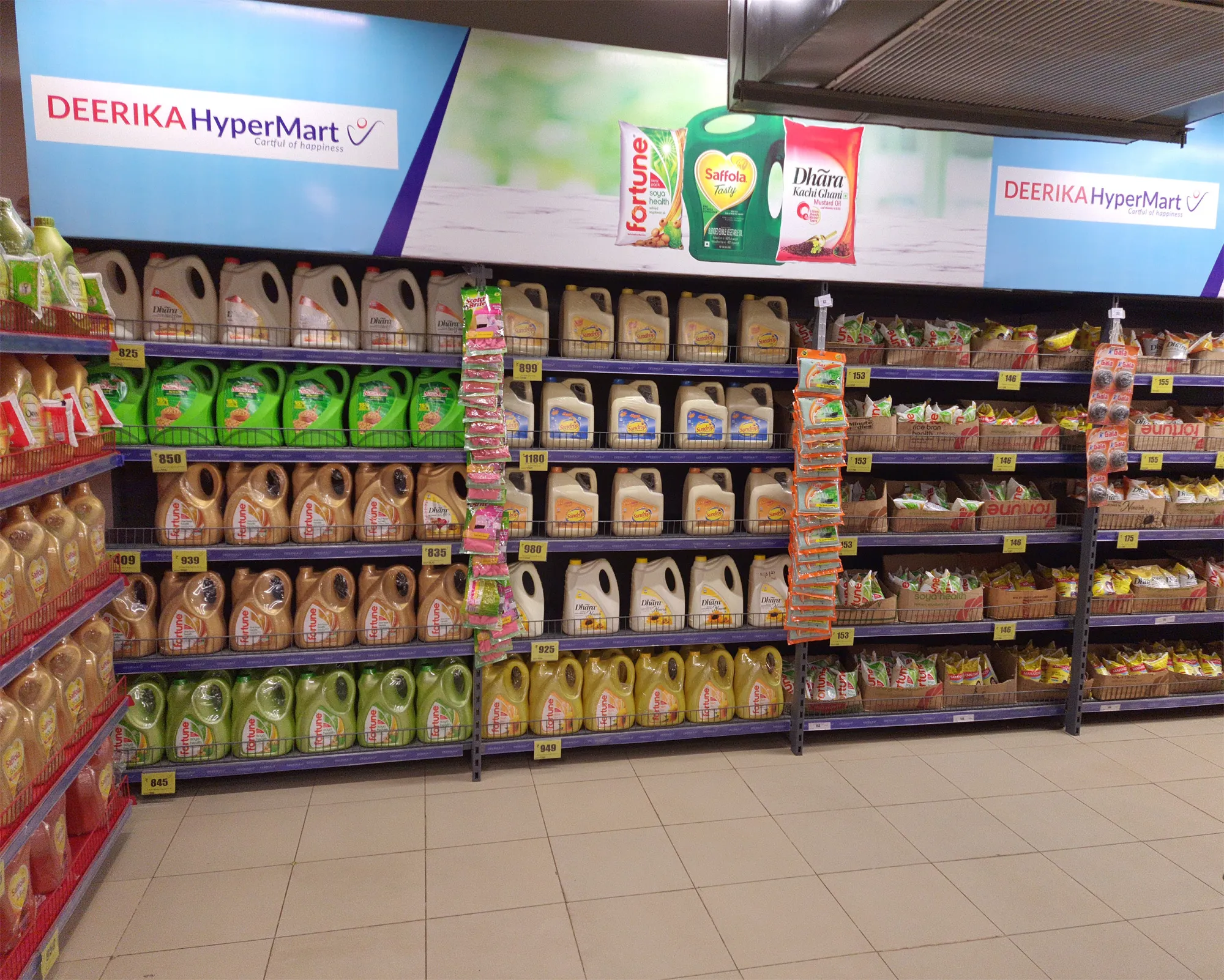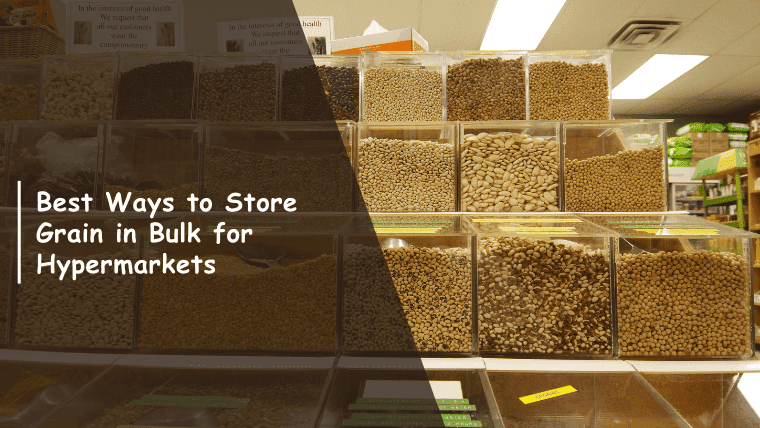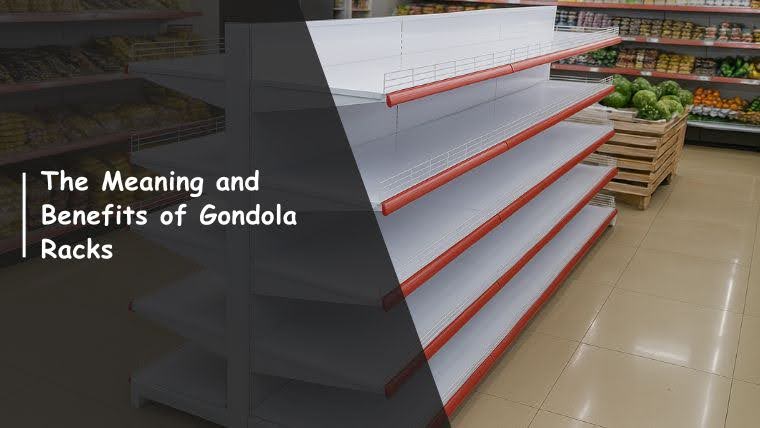Automated Storage and Retrieval System Guide
Learn about the ASRS system in this comprehensive guide. Discover how it works, its benefits, types, and how to choose the right system for your operations.

Learn about the ASRS system in this comprehensive guide. Discover how it works, its benefits, types, and how to choose the right system for your operations.

The growing adoption of Automated Storage and Retrieval Systems (AS/RS) is fueled by the rapid expansion of e-commerce, increasing labour costs, and the demand for more efficient logistics solutions.
The Indian AS/RS market is projected to grow at a compound annual growth rate (CAGR) of 10.70% from FY2025 to FY2032, increasing from USD 528.62 million (₹4,050 crore) in FY2024 to USD 1,192.13 million (₹9,000 crore) by FY2032.
This growth reflects a significant shift towards automation in Indian warehouses, aiming to enhance efficiency, reduce operational costs, and improve inventory accuracy.
This guide explores the intricacies of Automated Storage and Retrieval Systems, from how they work to their components, types, and benefits.
An Automated Storage and Retrieval System (AS/RS) is a highly efficient and technologically advanced warehouse solution that automates the storage and retrieval of products or materials.
The system performs tasks that were traditionally handled by human operators, such as retrieving items from storage locations, placing them in storage, and transporting them to the appropriate areas of the warehouse.
AS/RS is commonly used in environments where space is limited, inventory turnover is high, and the need for operational efficiency is paramount. By integrating automated systems, warehouses can optimise the use of available space, streamline processes, and reduce human error.
To optimise product placement and inventory management, Expanda Stand’s light duty industrial storage racks can enhance product visibility. These solutions improve access to high-demand items to increase storage capacity in space-constrained environments.
Also Read: Cantilever Racks Systems: Maximize Your Storage Efficiency
Now, let's explore how AS/RS works to streamline operations and improve warehouse efficiency.
An AS/RS system operates by utilising automated machinery and software to manage inventory in a warehouse. The process can be broken down into several key steps:
When goods are received in a warehouse, their data is captured via barcode scanning, RFID tags, or other identification technologies. This data is integrated with the warehouse management system (WMS), which stores all relevant information about the product.
Once the goods are identified, they are transported to the storage area. This is where automated systems like cranes, shuttles, or robots come into play. These devices move the items to predetermined storage locations within the facility.
Expanda Stand’s pallet racks can maximise storage space and streamline the retrieval of large, bulky items, making operations more efficient and less labour-intensive.
The inventory is continuously monitored using software systems that track stock levels and provide real-time updates. This helps maintain optimal stock levels and ensures that inventory is always in the right place at the right time.
When a product is needed, the system uses the same automated equipment to retrieve it from storage. The retrieval process is designed to be fast and accurate, minimising delays and human error.
Once retrieved, the items are often consolidated into orders. The system can combine multiple items from different locations to fulfil a single order, streamlining the order-picking process.
After order consolidation, the products are automatically transported to packing stations. Automated conveyors or robotic arms are used to move the items efficiently and safely, ensuring they reach the correct packing stations without delays.
The system continuously collects data, including order processing times, inventory levels, and equipment performance. This data is then analysed to provide valuable insights for warehouse managers, helping optimise operations.
Also Read: Guide to Warehouse Storage Pallet Types and Uses
Next, let’s look into the essential components that make an AS/RS system efficient and effective in warehouse operations.
An AS/RS system is composed of several key components that work together to ensure the smooth functioning of the system. These components include storage racks, software, control systems, workstations, and safety systems.
Industrial storage racks hold inventory and maximise vertical space. They offer easy access to products and vary in design, such as static, mobile, or shuttle-based systems, depending on the AS/RS type.
Inventory management software is crucial to the functioning of AS/RS. This software tracks and manages inventory in real-time, allowing for automated ordering, stock replenishment, and order processing.
Control systems are responsible for managing the entire AS/RS operation. They control the movement of automated machinery, such as cranes, shuttles, and conveyors, and ensure that goods are stored and retrieved in an efficient and accurate manner.
Workstations are areas where operators interact with the system. These stations can be used for tasks such as order consolidation, packing, or quality control. They are equipped with the necessary tools and interfaces to monitor and control the AS/RS system.
Safety systems are vital in ensuring the well-being of workers and the smooth operation of the system. These include safety barriers, emergency stop buttons, and sensors to prevent accidents.
Also Read: Types of Warehouse Storage Systems and Solutions
Now, let’s look at the different types of AS/RS systems available, each catering to specific operational needs.
AS/RS systems come in various types, each designed to cater to different operational requirements. Below, we highlight the most common types of AS/RS used in warehouses today.
Cube storage systems utilise vertical storage space to maximise density. Products are stored in a grid pattern and retrieved using automated cranes or shuttles. This system is ideal for environments where space efficiency is critical.
Unit-load AS/RS uses cranes to transport large items from one location to another. Fixed-aisle systems have predetermined pathways, while moveable aisle systems allow the aisles to shift to optimise storage.
Mini-load AS/RS is designed for smaller items and uses cranes to transport products to storage locations. This system is ideal for environments where products are lightweight or come in small sizes.
Shuttle systems use automated shuttles to transport products within the warehouse. The shuttles operate within storage racks, allowing for high-density storage and retrieval.
Carousel-based systems consist of rotating shelves that move products to the operator. These systems are commonly used for smaller, lighter items and can speed up the picking process.
These systems use robotic technology to move products vertically or horizontally. Robotic VLM systems are highly flexible and can handle a variety of products in a compact space.
Micro-load systems are designed for very small items or products. These systems use a stocker to transport products to storage locations. They are often used for high-precision environments.
VSM systems use vertical sequences to store and retrieve products. The system is particularly effective in environments where space is at a premium and vertical space can be fully utilised.
As your storage needs grow, Expanda Stand’s Multi-Tier & Mezzanine Racks provide an ideal solution to optimise vertical space. These scalable systems integrate with automated processes, improving efficiency while expanding storage capacity.
Mobile robots, including Automated Guided Vehicles (AGVs) and Autonomous Mobile Robots (AMRs), are increasingly being used in AS/RS systems. These robots transport goods autonomously within the warehouse, enhancing efficiency and reducing human intervention.
Also Read: Is a Steel Rack Worth It? Here’s What Experts Say!
Next, let’s explore the key benefits they provide to improve warehouse operations.
Implementing an AS/RS can revolutionise your warehouse operations by providing numerous benefits. Here are some key advantages of adopting an AS/RS.
AS/RS systems maximise storage capacity by using vertical space and optimising the layout of the warehouse. This results in more products being stored in a smaller footprint.
By automating storage and retrieval processes, AS/RS systems significantly reduce the time taken to store and retrieve products, leading to faster order fulfillment.
By applying advanced software to track inventory in real-time, AS/RS systems reduce the chance of human error and ensure that the inventory is always accurate.
Automating warehouse processes reduces the need for manual labour, leading to significant cost savings. It also frees up workers to focus on more complex tasks.
By using automated systems to manage heavy lifting and other potentially hazardous tasks, AS/RS lowers the possibility of worker injuries and guarantees a safer workplace.
AS/RS systems can be scaled to meet growing demands. They are flexible enough to accommodate changes in inventory or operational needs.
For businesses looking to optimise storage efficiency, Expanda Stand’s longspan racks provide flexible, scalable solutions that are easy to integrate with your AS/RS system.
AS/RS systems speed up order fulfillment by automating critical processes, which leads to quicker delivery times and happier customers.
The efficiency of automated systems reduces the overall cost of operating a warehouse. Lower energy consumption, fewer errors, and less need for manual intervention all contribute to cost savings.
Also Read: Attractive 6 Key Benefits of Racks for the Storage Industry
Let’s now take a closer look at some common applications where AS/RS is used effectively across different industries.
AS/RS systems are widely used across various industries, each with unique applications and requirements. Let’s explore the most common AS/RS applications in different sectors.
Also Read: Modern Supermarket Racks That Transform Store Aisles
Let’s now look at the signs that indicate when you need to implement an AS/RS in your operations.
While AS/RS systems can benefit many businesses, there are certain signs that indicate when it’s time to implement one. Here are ten signs that it's time to consider automation.
Also Read: Right Rack for Shop: From Grocery to Garments
Next, let's discuss how to choose the right system for your warehouse.
It's important to choose the appropriate AS/RS for your warehouse because it should meet your operational requirements, inventory types, and expansion objectives. Here are the factors to consider when choosing the right AS/RS for your business.
The kind of AS/RS system that will function best in your warehouse will depend on its size and layout. Larger warehouses may benefit from high-density systems like cube storage or shuttle-based systems.
Consider the number of orders you need to process daily. High-throughput operations may require more advanced and fast-moving systems like unit-load AS/RS.
Different AS/RS systems are better suited to different types of inventory. For example, mini-load AS/RS is ideal for smaller items, while unit-load AS/RS is better for larger products.
Ensure the AS/RS system can integrate with your existing warehouse management software (WMS) and other systems to ensure operation.
Consider the maintenance needs of the system. Some systems require more frequent maintenance than others, which can affect uptime.
Your budget will play a significant role in determining which AS/RS system is right for you. Consider both initial setup costs and ongoing operational costs.
Choose a system that can grow with your business. Scalable systems allow you to add more storage or handling capacity as your business expands.
Also Read: 7 Easy Steps to Set Up Pallet Racks in Your Warehouse
Next, let's explore how to select the right AS/RS for your specific industry and its unique needs.
Selecting the ideal Automated Storage and Retrieval System (AS/RS) for your industry requires understanding both your operational needs and the specific challenges your sector faces.
Below, we explore how AS/RS can be tailored for various industries and how to choose the right solution for each.
E-commerce requires fast order fulfillment and handling high volumes of stock. The system should quickly process small to medium-sized items and manage seasonal fluctuations.
Recommended AS/RS: Shuttle-based systems and carousel-based AS/RS are ideal for handling rapid order picking and high product variety.
The automotive and manufacturing industries require precision in storing and retrieving parts and components. With engines, car parts, and tools, maintaining a well-organised system is essential to minimise downtime and improve production efficiency
Recommended AS/RS: Unit-load AS/RS and mini-load systems effectively manage both large and small components.
One of the most important issues facing the food and beverage sector is effectively managing inventory while adhering to safety and health standards. Items often have a limited shelf life, requiring fast retrieval and rotation of stock.
Recommended AS/RS: Shuttle-based AS/RS and vertical lift modules optimise space and ensure proper handling of perishable goods.
Pharmaceuticals require strict inventory tracking and regulatory compliance. The system must handle sensitive products with precision and maintain environmental conditions.
Recommended AS/RS: VLMs, mini-load AS/RS, and robotic systems ensure accurate tracking and temperature-controlled storage.
Expanda Stand’s pharmacy racks offer customisable space for medications, supplements, and healthcare essentials. Designed for easy access and visibility, they help pharmacists quickly locate items, reducing delays and improving service efficiency.
Managing various media formats requires efficient storage and retrieval of books, magazines, and media assets. AS/RS helps simplify distribution and improve access.
Recommended AS/RS: Carousel-based and shuttle-based systems enhance order-picking speed for media assets.
Finally, let’s assess the costs and ROI of implementing an AS/RS system to ensure it's a worthwhile investment.
Analyzing the expenses and possible return on investment (ROI) is essential when making an AS/RS system investment. While initial costs can be high, the long-term benefits often outweigh these expenses. Key factors to consider include:
Generally, businesses can expect a return on investment within 2-5 years, with benefits like reduced operational costs, increased efficiency, and better inventory control. A well-implemented AS/RS system provides long-term value to warehouse operations.
To wrap up, let’s explore how Expanda Stand’s solutions can help transform your storage efficiency.
Maximising storage efficiency is essential for simplifying warehouse operations. Expanda Stand’s Industrial Storage Solutions offer a wide range of products designed to optimise space, improve accessibility, and enhance workflow.
Perfect for light-duty storage, industrial steel shelving, light-duty industrial storage, and office file storage racks help organise smaller items efficiently, improving workspace and warehouse orderliness.
For larger items, Longspan Racks provide adjustable shelving that supports heavy-duty products, maximising storage capacity while ensuring easy access to goods.
Our Drive-in Pallet Racks, Selective Pallet Racking, and Heavy Duty Racking options offer versatile solutions for bulk palletised goods, enabling high-density storage and quick retrieval.
With systems like Carton Flow Rack, Carton Flow with Pallet Storage, and Gravity Flow Pallet Racks, these solutions allow for smooth, first-in-first-out (FIFO) product retrieval, ensuring quick and efficient inventory management.
Ideal for long or irregularly shaped items like pipes and tubes, our Double Side Cantilever, Heavy Duty Cantilever Storage, and Light Duty Cantilever for Pipes provide flexible, accessible storage solutions.
Mezzanine Flooring and Multi-Level with Mezzanine allow you to utilise vertical space for added storage capacity, while Multi-Tier Storage Racks improve inventory organisation and access.
Incorporating Expanda Stand’s Automated Shelving Systems, Pallet Racks, and Medical Store Racks can significantly improve your storage efficiency. These solutions optimise space, enhance accessibility, and streamline operations across various industries.
Your warehouse operations can be greatly enhanced by an Automated Storage and Retrieval System (AS/RS), which boosts productivity, lowers expenses, and improves inventory accuracy.
By understanding the different types of AS/RS, their components, and the benefits they provide, businesses can make informed decisions about automating their storage and retrieval processes.
Expanda Stand offers innovative solutions, including Pallet Racks, Flow Racks, and Multi-Tier Racks that can streamline your storage, improve accessibility, and boost operational productivity.
Reach out to us to discover how we can help you achieve warehouse efficiency.
1. What are the main types of AS/RS systems?
Common types include Cube Storage AS/RS, Unit-Load AS/RS, Mini-Load AS/RS, Shuttle AS/RS, Carousel-based AS/RS, VLMs, Micro-load AS/RS, and Mobile Robots (AGVs/AMRs), each catering to different storage and retrieval needs.
2. How does an AS/RS improve inventory management?
AS/RS automates inventory tracking in real-time, ensuring accurate stock levels and reducing human error. The system integrates with warehouse management software for precise control and streamlined operations.
3. What industries can benefit from AS/RS?
Industries like e-commerce, pharmaceuticals, automotive, food and beverage, and retail can optimise storage, retrieval, and order fulfilment processes using AS/RS, tailored to their specific needs.
4. When is the right time to implement AS/RS?
If your warehouse experiences high replenishment loads, excessive search times, misplaced inventory, or increasing labour costs, it may be time to implement an AS/RS to streamline operations.
5. How do I choose the right AS/RS for my warehouse?
Consider your warehouse size, inventory types, throughput requirements, and budget. Ensure the AS/RS system integrates with existing operations and is scalable for future growth.




Ready to Upgrade Your Process Operations?